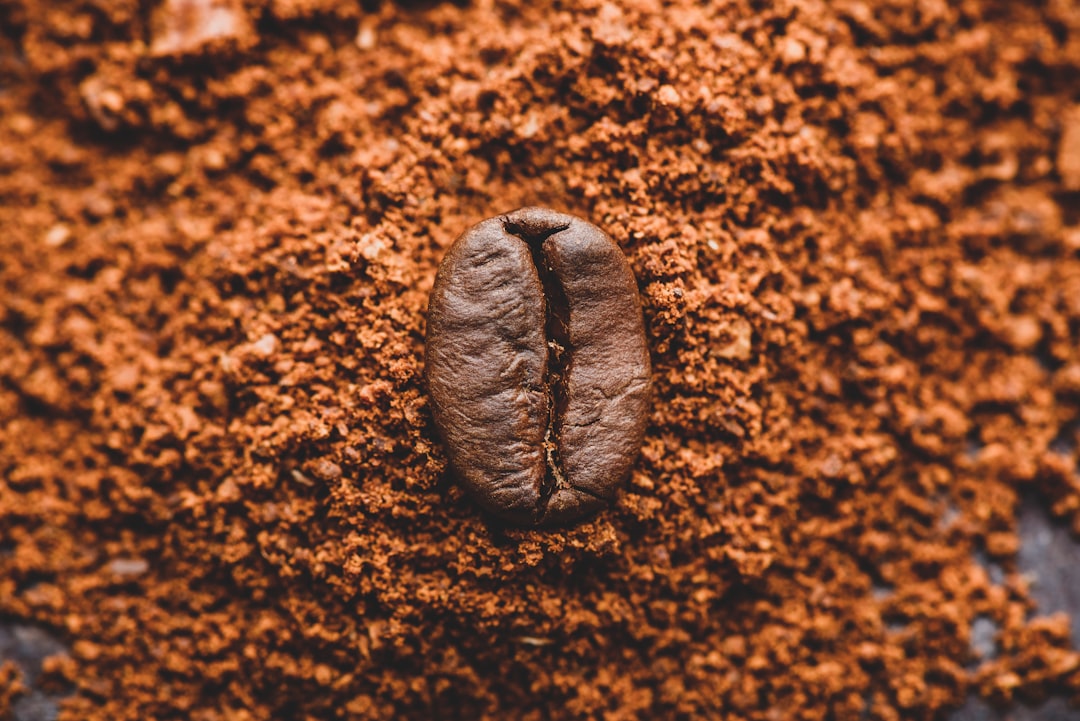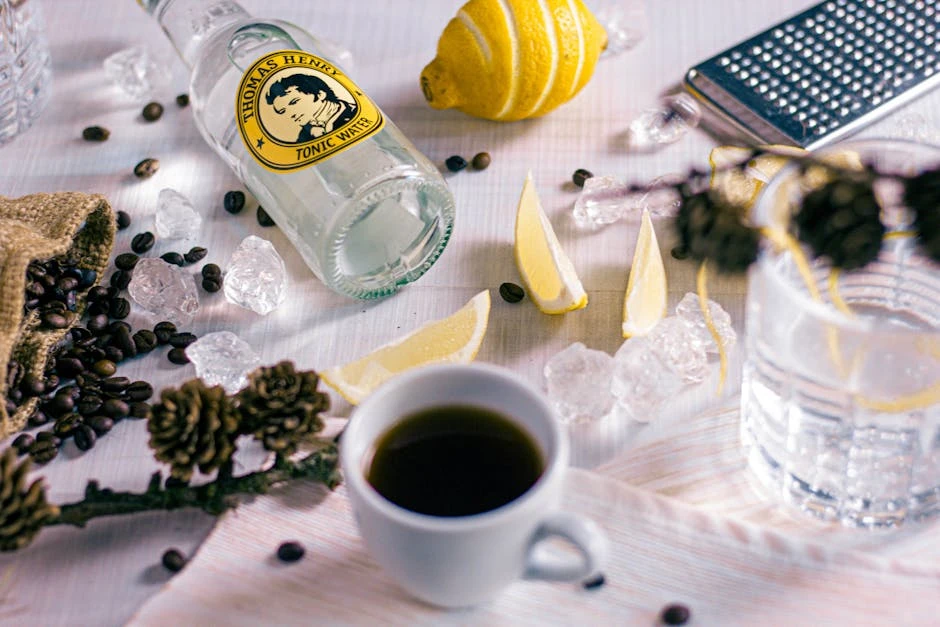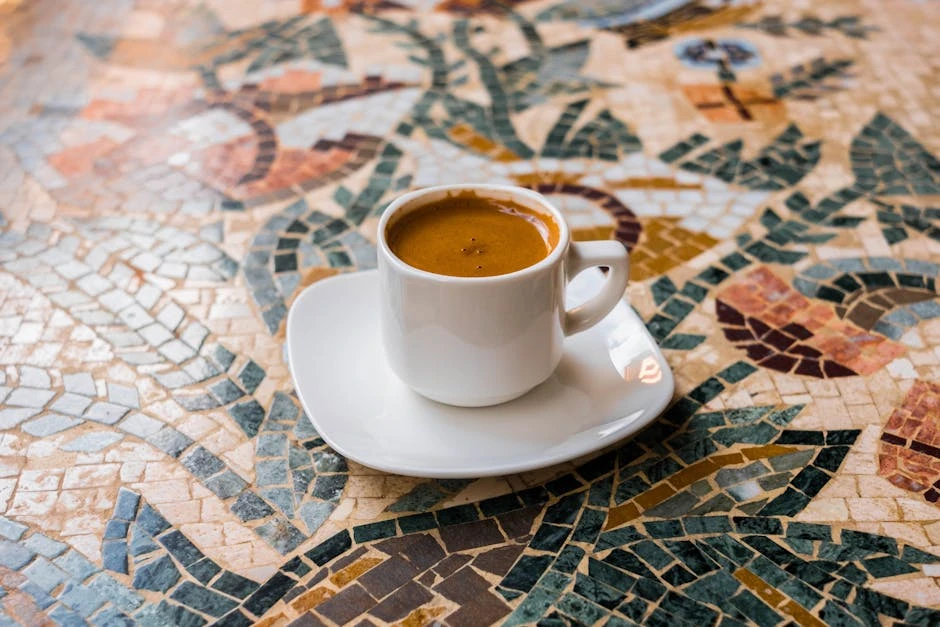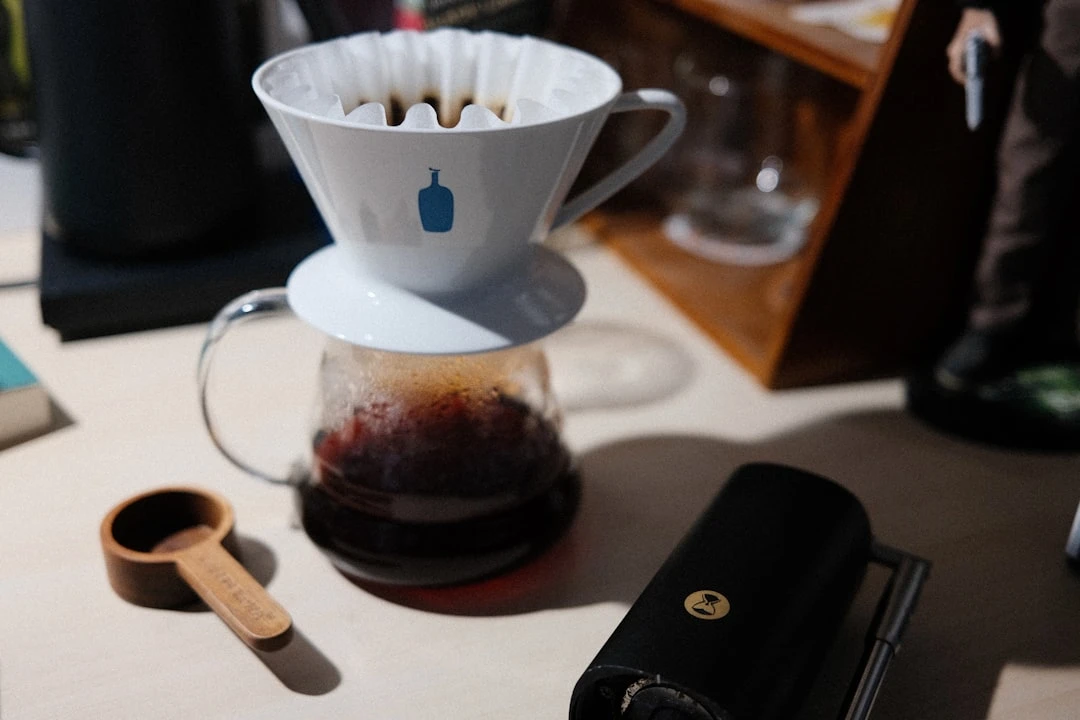Fresh Coffee Magic: Why Grind Fresh for Ultimate Flavor

Ah, that first sip of morning coffee—deep, warm, and just a little bit magical.
But let’s be real: what turns a decent cup into something you actually crave? It’s all about the freshness. And nothing—nothing—beats grinding your beans right before the water hits them. Pre-ground? Please. That’s like settling for day-old bread when you could have a loaf straight from the oven.
Here’s the thing: the moment those beans break open, they start losing their spark. Air creeps in, dulling the bright notes, the earthy richness—everything that makes coffee worth savoring. What’s left tastes… tired. But grind fresh? Suddenly, every sip has this vibrancy, this aliveness you didn’t know you were missing.
And it’s not just about taste—the grind size? Crucial. Go too fine, and it’s like chewing on bitter grounds. Too coarse? Might as well drink lightly flavored water. But when you grind fresh, you call the shots. Need espresso? Adjust. Pour-over? Adjust. French press? You get the idea. The perfect cup isn’t luck—it’s in your hands.
So if coffee’s your thing, a grinder isn’t a luxury. It’s as basic as good beans. That split second between grinding and brewing? That’s where the magic happens. Do it right, and—well, let’s just say you’ll wonder how you ever settled for less.
Why Freshly Ground Coffee Just Hits Different
Alright, let’s get into it—why does your morning cup taste *so* much better when you grind the beans right before brewing? It’s not just some trend. There’s real science behind it, and maybe a touch of magic, too.
1. Oxygen’s a Sneaky Flavor Thief
Whole beans? They’re like little treasure chests, packed with flavor. But the second you grind them, oxygen barges in and starts stealing the good stuff—those rich oils, the bright aromas, everything that makes coffee worth drinking. Pre-ground? It’s already lost half its soul. Whole beans? Still holding onto theirs.
2. The Smell That Stops You Mid-Sip
Remember that first whiff when you open a fresh bag? That’s the good stuff. But grind those beans too soon, and poof—it’s gone. Fresh grinding keeps those wild, vibrant notes—citrus, dark chocolate, maybe even a hint of flowers—so your cup actually lives up to the promise of that first sniff.
3. No More Guessing Games
Pre-ground coffee is a gamble. Some of it’s fine powder (hello, bitterness), some’s chunky (yeah, that’s sour). But grind fresh? You’re in control. Smooth? Adjust. Bold? Adjust. No surprises, just good coffee.
4. CO₂: The Flavor Bodyguard
Fresh beans are loaded with CO₂, and that gas is like a shield for flavor. Grind too early, and it vanishes. Grind right before brewing? It sticks around, especially for espresso—that’s where the creamy *crema* comes from, and trust me, it’s worth the fuss.
So if you want coffee that actually tastes like coffee—not some sad, stale imitation—grind it fresh. Your taste buds won’t know what hit them.
Why Freshly Ground Coffee Tastes Better
Let’s be honest—there’s nothing quite like freshly ground coffee. That first sip? Richer, bolder, almost electric. And it’s not just your imagination. The moment coffee beans are ground, they start slipping away from their best. Those intoxicating oils, the delicate aromas—they begin vanishing the second they hit the air. That’s why pre-ground coffee so often tastes like... well, a shadow of what it could be. But grind it fresh? You’re tasting coffee as it was meant to be—unfiltered, untamed.
Here’s the secret: whole beans are tiny treasure chests. Their natural shell locks in flavor, keeping them vibrant far longer. But grind them? Suddenly, there’s nowhere to hide. Oxygen rushes in, and the magic starts fading fast. Some studies say pre-ground loses half its aroma in under fifteen minutes. Think about that. Fresh grinding? It’s your ticket to every layer—bright citrus, deep caramel, the whole symphony.
And let’s talk grind size—it matters. A French press craves something coarse and rugged; espresso demands fine, almost powdery grounds. Fresh grinding lets you dial it in perfectly. Pre-ground? It’s usually stuck in no-man’s-land, leaving your brew either thin or bitter.
So if you want coffee that actually tastes like coffee? Grind it fresh. Your morning self will know the difference.
The Scent of Fresh Coffee: Why Grinding Makes All the Difference
There’s something about grinding coffee—the way the air suddenly fills with this rich, intoxicating warmth. It’s those hidden oils and gases, trapped inside the beans, finally breaking free. But here’s the catch: that magic? It’s fleeting. Once ground, coffee starts fading almost immediately, like a sigh dissolving into the air.
Whole beans, though? They hold onto it all—those deep, complex flavors tucked safely away inside. Grinding cracks them open, lets the air rush in, and... well, oxygen isn’t exactly a friend to freshness. Research says within 15 minutes, a good chunk of that vibrant aroma slips away. What’s left behind? Something flat, dull—like a conversation you’ve already forgotten.
Then there’s the grind itself. Fine? It hits you all at once, bold and unapologetic. Coarse? It lingers, teasing out the notes slowly—if you brew it just right. Get the grind size perfect, though, and your coffee unfolds like a story, each sip revealing something new.
So here’s the trick: grind when you’re ready to brew. That’s how you keep the bright citrus, the dark chocolate whispers, the faintest hint of flowers—all of it alive. Because really, shouldn’t coffee taste as good as it smells?
Why Pre-Ground Coffee Tastes Like Sad Cardboard (Thanks, Oxygen)
Here's the thing about pre-ground coffee—it's where flavor goes to die. And we all know who's to blame: oxygen. That invisible, everyday gas? It's brutal. The moment coffee beans get ground, they're suddenly vulnerable, exposed to way more air than they can handle. Those rich oils and complex aromas? They start fading fast. Before long, you're left with a cup that tastes... well, let's just say it's not winning any awards.
The countdown begins immediately. Those vibrant, nuanced flavors? They're the first to vanish—sometimes in mere minutes. Research shows ground coffee can lose a shocking amount of its character in just 15–30 minutes, even in an airtight container. And if it's been sitting on a shelf for days (or, let's face it, months)? Forget it. What's left is either bitter, hollow, or weirdly reminiscent of yesterday's breakfast.
Most pre-ground coffee has been trapped in bags for way too long before you even bring it home, so half the magic is already gone by the time you brew. Sure, some high-end packaging (like those vacuum-sealed bags with fancy valves) might slow the decay a little, but it's not a cure. Freshly ground coffee? That's where the real magic happens.
Here's the truth: if you want coffee that actually tastes alive, grind it right before brewing—it's like building a tiny fortress against oxygen's relentless siege. Stuck with pre-ground? Keep it sealed tight in a cool, dark spot (and no, the fridge doesn't help). But let's be real... there's no substitute for the real thing. Oxygen strikes again.
Alright, let’s talk coffee grinders.
So you’re standing there, staring at the options, wondering which one’s right for you. Here’s the deal—it all comes down to what kind of coffee experience you’re after. Burr grinders versus blade grinders? They’re not even playing the same sport. And that choice? It shapes everything—the taste, the control, the whole ritual.
Burr Grinders: Precision in Every Particle
These things work like magic. They crush your beans between two burrs—flat or conical—spitting out grounds so consistent, it’s almost unfair. No random bitterness, no weak spots in your brew, just pure, balanced flavor. Flat burrs? They’re the heavy hitters, the ones you’ll see behind the counter at your favorite café. Conical? Sleeker, quieter, perfect for a home setup. Yeah, they cost more. But if you care about that perfect espresso or a French press that sings? Worth every penny.
Blade Grinders: Quick, Cheap, and a Little Wild
Imagine a tiny tornado of blades hacking at your beans—that’s basically what happens here. You’ll end up with a mix of dust and chunks, which means your coffee might taste… unpredictable. But look, if you just need caffeine in your veins fast and don’t want to break the bank, it’ll get you there. Just don’t expect miracles.
So What’s the Move?
If flavor’s your priority—if you want to actually taste the notes your coffee promises—then a burr grinder is the only answer. If you’re just trying to survive Monday morning on a budget? Grab a blade grinder and call it a day. But here’s the truth: great coffee starts with great grounds. And a good burr grinder? That’s where the magic begins.
How to Grind Coffee Like a Pro at Home (Without Fancy Gear)
Okay, let’s be honest—nothing beats the taste of freshly ground coffee. But if you’ve ever sipped something that felt more like punishment than pleasure, the grind might be to blame. Here’s how to get it right:
- Start with a Better Grinder – Blade grinders? They hack at beans like a dull knife. Burr grinders? They’re the quiet heroes, giving you a consistent grind every time. Your coffee will taste like it’s supposed to—balanced, not bitter.
- Grind Size Matters – French press? Go coarse. Espresso? Fine as dust. Pour-over? Somewhere in between, like sand. Nail this, and you’re halfway to greatness.
- Grind When You Need It – Coffee’s at its best right after grinding. Wait too long, and those rich flavors start fading fast. Only grind what you’ll use—it’s a small step with a big payoff.
- Measure with Care – Guessing leads to chaos. Try a 1:15 coffee-to-water ratio, then adjust to taste. Too weak? Add more grounds. Too strong? Dial it back. Trust your tongue.
- Keep It Clean – Leftover grounds turn stale and bitter. A quick brush-out now and then keeps things tasting fresh.
- Store Beans Smartly – Keep them sealed tight, away from light and heat. The fridge? Not unless you enjoy the taste of yesterday’s leftovers.
Follow these basics, and you’ll be brewing coffee that rivals your favorite café. Tweak, taste, repeat—and when in doubt, just add more coffee. (It usually works.)
Pre-Ground Coffee Myths You Should Stop Believing
Alright, let’s cut through the noise—plenty of people claim pre-ground coffee holds up just fine against freshly ground beans. But… well, it doesn’t. Here’s the truth:
Myth 1: "Pre-ground coffee stays fresh just like whole beans."
Not a chance. The moment coffee is ground, it’s on borrowed time. Oxygen creeps in, flavors fade. Whole beans? They’ve got a protective shell that locks in taste. Pre-ground? You’re lucky if it lasts a week before going flat.
Myth 2: "All pre-ground coffee is the same."
Please. Some brands might use halfway decent beans, but most? They’re dumping the leftovers. Even the "premium" pre-ground stuff can’t compete with the real deal—freshly ground, right before brewing.
Myth 3: "Pre-ground is just as good—just more convenient."
Sure, ripping open a bag is quick. But here’s the catch: different brew methods need different grinds. Espresso demands fine powder; French press craves coarse chunks. Pre-ground? It’s a compromise that pleases no one. Fresh grinding? That’s where the magic happens.
Myth 4: "Vacuum sealing keeps pre-ground coffee fresh forever."
Okay, vacuum sealing buys you time—until that first scoop. After that, the clock’s ticking. Whole beans? They’re resilient. Ground coffee? It’s a sitting duck.
Bottom Line
Pre-ground is undeniably easy. But if you care about taste? Invest in a grinder. It’s a few extra seconds for a cup that actually tastes like something worth savoring.
Oh, you're after real coffee? Here's the thing—start with fresh beans, and grind them yourself.
Pre-ground? It's like bread left out overnight—stale before it even hits your cup. But that moment when you grind just before brewing? Oh man. The scent alone wakes you up—rich, earthy, almost electric. And that first sip? Suddenly the morning doesn’t feel so rushed.
Sure, pre-ground is easy. But good coffee? That’s about taking your time. A decent grinder and whole beans mean you call the shots—coarse for a lazy French press, fine for a sharp little espresso, whatever your mood craves.
Skip the sad, dusty stuff. Grind fresh. Taste the difference. Make it a habit, something to savor. Once you do? Yeah—good luck settling for anything less.
Related Articles



